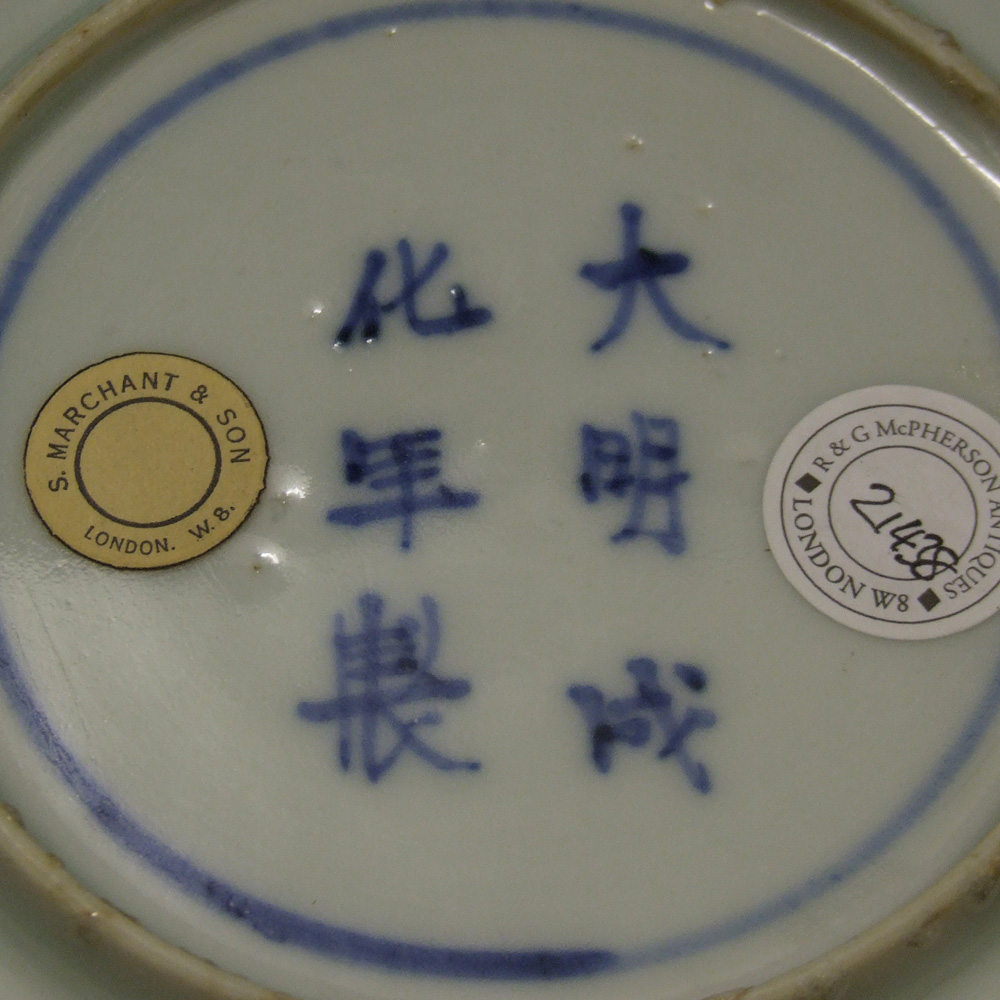
TIANQI or CHONGZHEN c.1620 – 1640. Ming Porcelain
A Late Ming Transitional Blue and White Ko-Sometsuke Porcelain Dish for the Japanese Market, Tianqi or Chongzhen c.1620-1640. Decorated with a Hare Against a Fukizumi Ground and a Brown Iron Rich Kuchibeni Rim. Iron-Oxide has the Ability to Bind the Glaze to the Body and so Prevent `Fritting` to the Rim. The Base with an Apocryphal Six Character Chenghua Mark.
SOLD
- Condition
- Very good, tiny chips to the footrim.
- Size
- Diameter : 14 cm (5 1/2 inches)
- Provenance
- S.Marchant & Son, A Private Collection.
- Stock number
- 21438
- References
- For a very similar Ming Porcelain dish, possibly from the same set of five dishes that present example came from see : Exhibition of Transitional Wares for the Japanese and Domestic Markets, S.Marchant & Son, 11th - 30th June 1989. Page 27 item 32.
Information
Ko-Sometsuke
Ko-Sometsuke is a term used to describe Chinese blue and white porcelain made for Japan. This late Ming porcelain was made from the Wanli period (1573-1620) and ended in the Chongzhen period (1628-1644), the main period of production being the 1620`2 and 1630`s. The porcelain objects produced were made especially for the Japanese market, both the shapes and the designs were tailored to Japanese taste, the production process too allowed for Japanese aesthetics to be included in the finished object. Its seams firing faults were added, repaired tears in the leather-hard body were too frequent to not, in some cases, be deliberate. These imperfections as well as the fritting Mushikui (insect-nibbled) rims and kiln grit on the footrims all added to the Japanese aesthetic. The shapes created were often expressly made for the Japanese tea ceremony meal, the Kaiseki, small dishes for serving food at the tea ceremony are the most commonly encountered form. Designs, presumably taken from Japanese drawings sent to China, are very varied, often using large amount of the white porcelain contrasting well with the asymmetry of the design.
